Take a dive into the Mac Speedup Pro virus issue on Mac that’s upsetting numerous users with fake scans, annoying popup alerts, and big system footprint.
Update:
The niche of fake system utilities is somewhere near the top in the hierarchy of Mac malware. Although this long-running category of infections has hit the headlines multiple times, users keep getting on the hook in pursuit of keeping their machines virus-free and performing at their peak. Also referred to as scareware, these culprits have evolved into a real scourge over the years, with new variants regularly superseding the ones that gained too much notoriety to continue thriving. Mac Speedup Pro is a virus exemplifying this lifecycle. It follows a logic that boils down to convincing the victim that their Mac is neither safe nor properly optimized. In this activity, the infection fits the mold of its predecessors from the same family of rogue apps, such as Advanced Mac Cleaner. What’s more, it features just about the same GUI as its prototype.
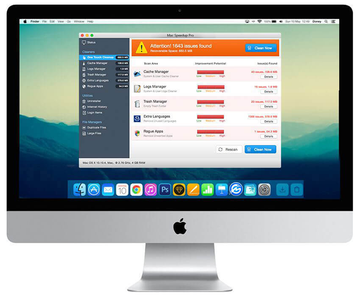
Following the furtive trespass, which will be described further down, Mac Speedup Pro spreads its tentacles throughout the system by dropping core files into multiple directories. Whilst regular apps need to request administrative permissions in a forthright way to do this, the virus obtains sufficient privileges without actually asking. Among the other persistence mechanisms, it configures the contaminated host to launch the rogue executable during startup. Then, the parasite displays a scan screen that looks realistic due to the progress bar and the imitation of dynamic threat lookup. Its features are broken down into three sections: Cleaners, Utilities, and File Managers. When running its phony scans, the impostor program ostensibly focuses on problems with redundant cache, system logs, unused languages, duplicate and large files, unnecessary login items, and potentially fingerprintable Internet history.
Mac Speedup Pro may re-infect your Mac multiple times unless you delete all of its fragments, including hidden ones. Therefore, it is recommended to download Combo Cleaner and scan your system for these stubborn files. This way, you may reduce the cleanup time from hours to minutes.
Download Now Learn how Combo Cleaner works. If the utility spots malicious code, you will need to buy a license to get rid of it.Even on a brand-new Mac that hasn’t been in use, Mac Speedup Pro will definitely claim to have found numerous issues by nearly all of the above-mentioned areas. To make this activity reminiscent of something genuine, the offending app will report some real browser cookies along with absolutely imaginary issues. However, it will flag those generally benign items as critical in order to pressure the victim into addressing the pseudo predicament as soon as possible. All in all, the junk utility’s scans will return bogus results, emphasizing that gigabytes of free disk space can be released and quite a few privacy concerns can be tackled in the click of a mouse. Guess what this click implies? The user will have to unlock full functionality by purchasing the hypocritical app’s license. This is the ultimate objective of every single Mac scareware out there. In order to enhance the manipulative maneuvers, the virus will add some popup alerts to the mix. These will be splashing up at predefined intervals, stating that the Mac’s productivity is terribly low and the current security status leaves a lot to be desired.
As an extra pressure element of the attack, Mac Speedup Pro may come with a malicious browser extension or plugin that iteratively triggers redirect instances accompanied by misleading popups. The cross-browser compatibility of this rogue entity allows it to deploy the brainwashing fraud in Safari, Firefox, and Chrome alike. As a result, the victim will be constantly visiting web pages with integrated scripts that are intended to display popup alerts about viruses allegedly detected on the Mac computer. Predictably enough, the “fix” suggested on these scam sites comes down to activating the full version of Mac Speedup Pro. Combined with fake scan reports and follow-up warnings occurring outside the browser, this activity gets on the victim’s nerves big time and encourages them to make the wrong decision.
So much for the tactics of Mac Speedup Pro when it’s on board an Apple computer. What about the installation? Those infected can’t remember having authorized any such apps to get in, which explains their bewilderment after seeing the irritating scan appear out of the blue for the first time. In fact, the contamination technique is quite vanilla. The intruder is doing the rounds through a trivial bundling hoax. It means that the user installs some nifty freeware without a second thought, and in the meantime the virus sneaks inside as part of the same setup client. Common sense suggests that selecting the custom installation option is the way to go in such scenarios. This method allows for unchecking the potentially unwanted extra entities, yet many people proceed headlong with the default setup, only to get infected with Mac Speedup Pro and suffer the consequences outlined here. If this is the case and the pest is wreaking havoc with a Mac, the instruction below will help remove it completely.
Mac Speedup Pro virus manual removal for Mac
The steps listed below will walk you through the removal of this potentially unwanted application. Be sure to follow the instructions in the order specified.
- Open up the Utilities folder as shown below
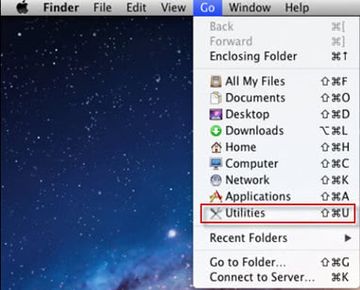
- Locate the Activity Monitor icon on the screen and double-click on it
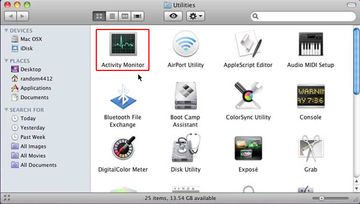
- Under Activity Monitor, find the entry for Mac Speedup Pro, select it and click Quit Process
- A dialog should pop up, asking if you are sure you would like to quit the Mac Speedup Pro executable. Select the Force Quit option
- Expand the Go menu in Apple Finder and select Go to Folder
- Type or paste the following string in the folder search dialog: /Library/LaunchAgents

- Once the LaunchAgentsdirectory opens up, find the following entries in it and move them to Trash:
- com.MacSpeedupPro.agent.plist
- com.MSP.agent.plist
- com.MacSpeedupPro.msphlpr
- com.MSP.msphlpr
- Use the Go to Folder lookup feature again to navigate to the folder named ~/Library/LaunchAgents. When this path opens, look for the same entries (see above) and send them to Trash
- Similarly, go to the ~Library/Application Support folder. Locate and move the following entries to Trash:
- MacSpeedupPro
- helpermsp
- hlprmsp
- hlprmacspeeduppro
- Click the Go button again, but this time select Applications on the list. Find the entry for Mac Speedup Pro on the interface, right-click on it and select Move to Trash. If user password is required, go ahead and enter it
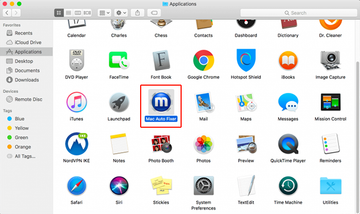
- Now go to Apple Menu and pick the System Preferences option
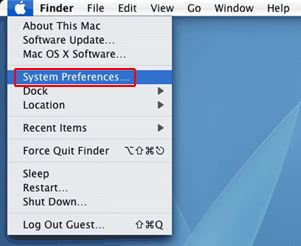
- Select Accounts and click the Login Items button. The system will come up with the list of the items that launch when the box is started up. Locate Mac Speedup Pro there and click on the “-“ button
Get rid of Mac Speedup Pro virus in web browser on Mac
To begin with, the web browser settings taken over by the Mac Speedup Pro virus should be restored to their default values. Although this will clear most of your customizations, web surfing history, and all temporary data stored by websites, the malicious interference should be terminated likewise. The overview of the steps for completing this procedure is as follows:
- Remove Mac Speedup Pro virus from Safari
Open the browser and go to Safari menu. Select Preferences in the drop-down list.
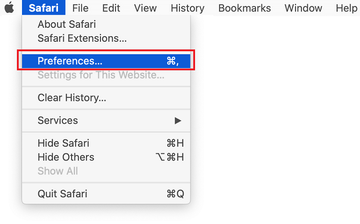
Once the Preferences screen appears, click on the Advanced tab and enable the option saying “Show Develop menu in menu bar”.
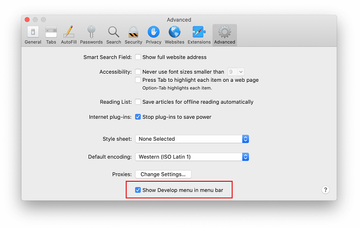
Now that the Develop entry has been added to the Safari menu, expand it and click on Empty Caches.
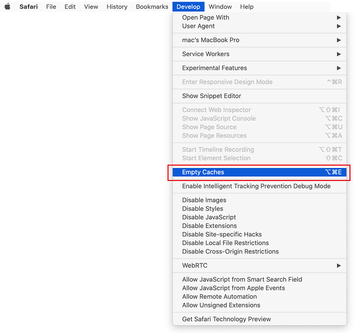
Now select History in the Safari menu and click on Clear History in the drop-down list.
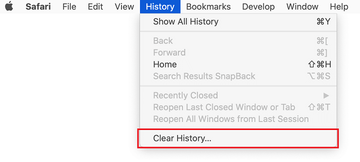
Safari will display a dialog asking you to specify the period of time this action will apply to. Select all history to ensure a maximum effect. Click on the Clear History button to confirm and exit.

Go back to the Safari Preferences and hit the Privacy tab at the top. Find the option that says Manage Website Data and click on it.

The browser will display a follow-up screen listing the websites that have stored data about your Internet activities. This dialog additionally includes a brief description of what the removal does: you may be logged out of some services and encounter other changes of website behavior after the procedure. If you’re okay with that, go ahead and click on the Remove All button.
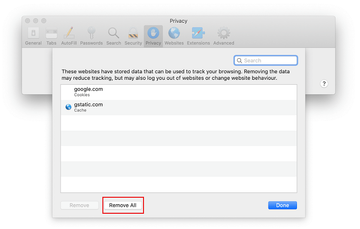
Restart Safari
- Remove Mac Speedup Pro in Google Chrome
Open Chrome, click the Customize and control Google Chrome (⁝) icon in the top right-hand part of the window, and select Settings in the drop-down
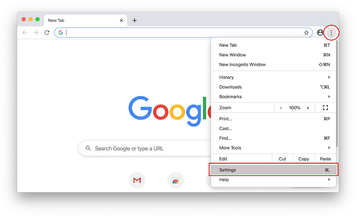
When on the Settings pane, select Advanced
Scroll down to the Reset settings section.
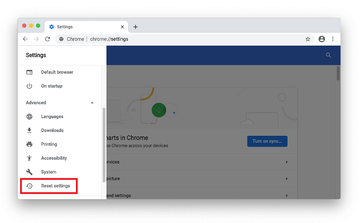
Confirm the Chrome reset on a dialog that will pop up. When the procedure is completed, relaunch the browser and check it for malware activity.
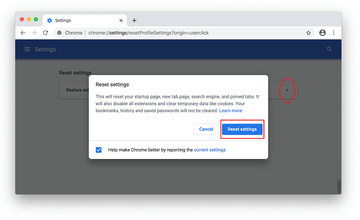
- Remove Mac Speedup Pro from Mozilla Firefox
Open Firefox and go to Help – Troubleshooting Information (or type about:support in the URL bar and press Enter).
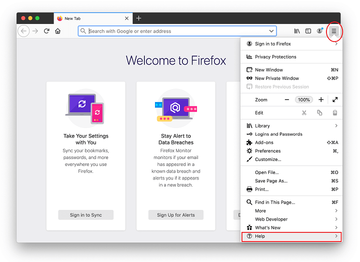

When on the Troubleshooting Information screen, click on the Refresh Firefox button.
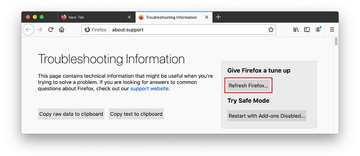
Confirm the intended changes and restart Firefox.
Use automatic tool to uninstall Mac Speedup Pro virus from your Mac
The Mac maintenance and security app called Combo Cleaner is a one-stop tool to detect and remove Mac Speedup Pro virus. This technique has substantial benefits over manual cleanup, because the utility gets hourly virus definition updates and can accurately spot even the newest Mac infections.
Furthermore, the automatic solution will find the core files of the malware deep down the system structure, which might otherwise be a challenge to locate. Here’s a walkthrough to sort out the Mac Speedup Pro issue using Combo Cleaner:
Download Combo Cleaner installer. When done, double-click the combocleaner.dmg file and follow the prompts to install the tool onto your Mac.
By downloading any applications recommended on this website you agree to our Terms and Conditions and Privacy Policy. The free scanner checks whether your Mac is infected. To get rid of malware, you need to purchase the Premium version of Combo Cleaner.
Open the app from your Launchpad and let it run an update of the malware signature database to make sure it can identify the latest threats.
Click the Start Combo Scan button to check your Mac for malicious activity as well as performance issues.
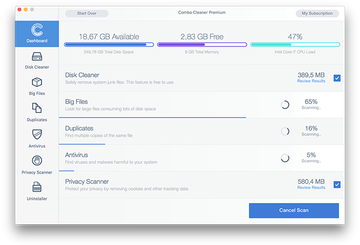
Examine the scan results. If the report says “No Threats”, then you are on the right track with the manual cleaning and can safely proceed to tidy up the web browser that may continue to act up due to the after-effects of the malware attack (see instructions above).
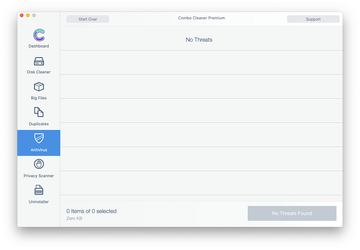
In case Combo Cleaner has detected malicious code, click the Remove Selected Items button and have the utility remove Mac Speedup Pro threat along with any other viruses, PUPs (potentially unwanted programs), or junk files that don’t belong on your Mac.
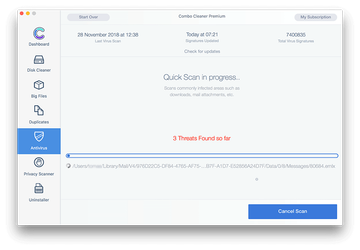
Once you have made doubly sure that the malicious app is uninstalled, the browser-level troubleshooting might still be on your to-do list. If your preferred browser is affected, resort to the previous section of this tutorial to revert to hassle-free web surfing.
FAQ
What is Mac Speedup Pro?
Mac Speedup Pro fits the mold of a typical scareware targeting Mac computers. On the outside, it looks just like a regular optimizer delivering such features as cache manager, duplicate and large files finder, login items cleaner, and app uninstaller. Although this functionality is generally welcome, the program deliberately exaggerates the performance improvement potential by reporting issues that aren’t there.
The fact that scan results by Mac Speedup Pro are blown out of proportion in terms of the risks it claims to detect isn’t the only concern about this fake system utility. It escalates the seriousness of the situation by constantly displaying popup alerts and re-running the pseudo scans off and on so that the victim ends up falling for the hoax.
To top it all off, the infection may interfere with the admin’s default browser settings in order to reroute the web traffic to scam sites that display phony virus warnings and recommend upgrading to the full (paid) version of Mac Speedup Pro. Given the entirety of devious techniques and highly intrusive activity overall, this application should be removed from Mac without delay.
Is Mac Speedup Pro legit?
The only sure thing about Mac Speedup Pro is that it’s a potentially unwanted application (PUA) using unethical marketing to propagate and displaying fake alerts to hoodwink Mac users into buying its license. It is distributed via software packages combining benign apps with shady ones under the same hood in such a way that people cannot easily identify the trap. Known as malicious bundling, this approach is a common method of malware promotion that works unless users read the fine print and opt out of the quick installation option.
When inside a system, Mac Speedup Pro inundates the victim’s experience with scan reports about nonexistent problems. It will usually also flag innocuous cookies as critical privacy issues to add more pressure to the general intimidation logic. By redirecting Safari, Chrome, or Firefox to sites with deceptive virus alerts on them, the scareware tries to be more convincing and thereby push the user to activate its commercial edition.
To recap, Mac Speedup Pro is a misleading app disguised as a commonplace performance enhancement tool. It is installed behind the victim’s back and annoys them into upgrading their “subscription plan” for a fee. Obviously, such a pest should be avoided by all means and immediately uninstalled if it’s already inside a Mac.
Is Mac Speedup Pro a virus?
Strictly speaking, a virus is a harmful computer program with self-replication capabilities that can inject its code into other software to inflate the attack surface. However, this concept has become generic over time, denoting a program that infiltrates a system without the user’s knowledge and causes damage or exhibits other adverse characteristics. Mac Speedup Pro fits with the latter definition. It is also often categorized as a PUA (potentially unwanted application), fake system utility (scareware), or adware.
The unwanted hallmarks of this threat include surreptitious installation by means of app bundles, scare tactics, browser redirects, deterioration of an infected Mac’s performance, and persistence mechanisms making it more difficult to uninstall than regular software. With that said, Mac Speedup Pro may not be a virus in the classic sense, but it is absolutely not safe to use. .
